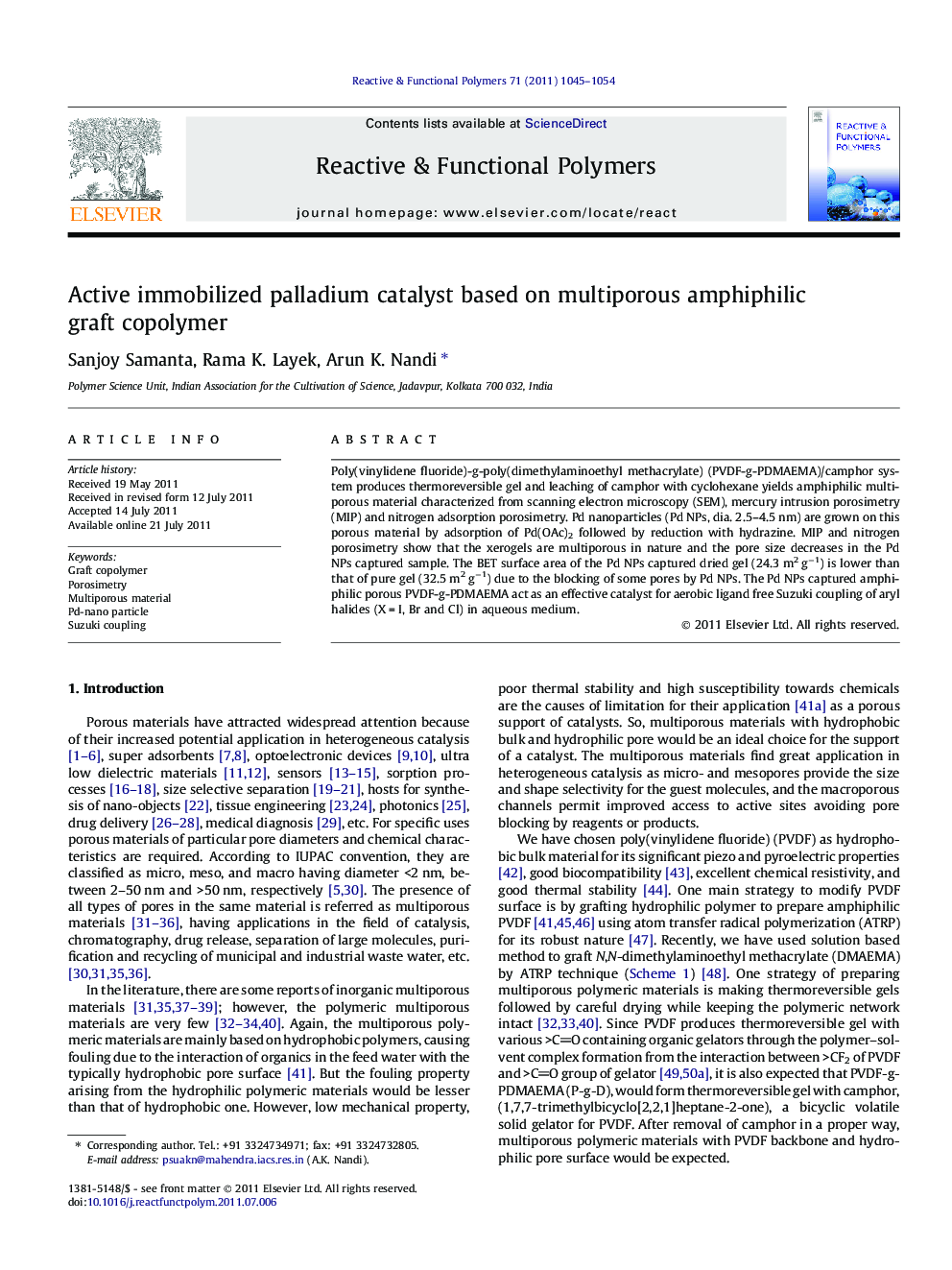| Article ID | Journal | Published Year | Pages | File Type |
|---|---|---|---|---|
| 5210560 | Reactive and Functional Polymers | 2011 | 10 Pages |
Poly(vinylidene fluoride)-g-poly(dimethylaminoethyl methacrylate) (PVDF-g-PDMAEMA)/camphor system produces thermoreversible gel and leaching of camphor with cyclohexane yields amphiphilic multiporous material characterized from scanning electron microscopy (SEM), mercury intrusion porosimetry (MIP) and nitrogen adsorption porosimetry. Pd nanoparticles (Pd NPs, dia. 2.5-4.5Â nm) are grown on this porous material by adsorption of Pd(OAc)2 followed by reduction with hydrazine. MIP and nitrogen porosimetry show that the xerogels are multiporous in nature and the pore size decreases in the Pd NPs captured sample. The BET surface area of the Pd NPs captured dried gel (24.3Â m2Â gâ1) is lower than that of pure gel (32.5Â m2Â gâ1) due to the blocking of some pores by Pd NPs. The Pd NPs captured amphiphilic porous PVDF-g-PDMAEMA act as an effective catalyst for aerobic ligand free Suzuki coupling of aryl halides (XÂ =Â I, Br and Cl) in aqueous medium.
